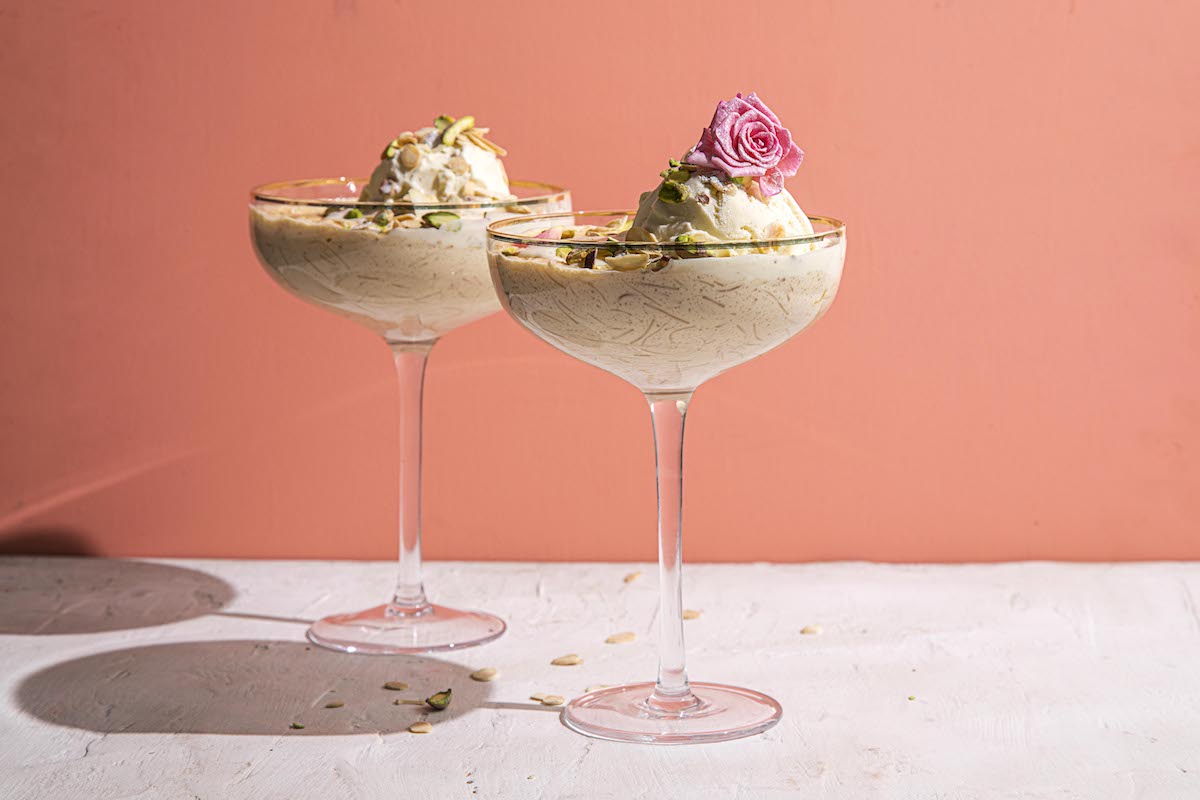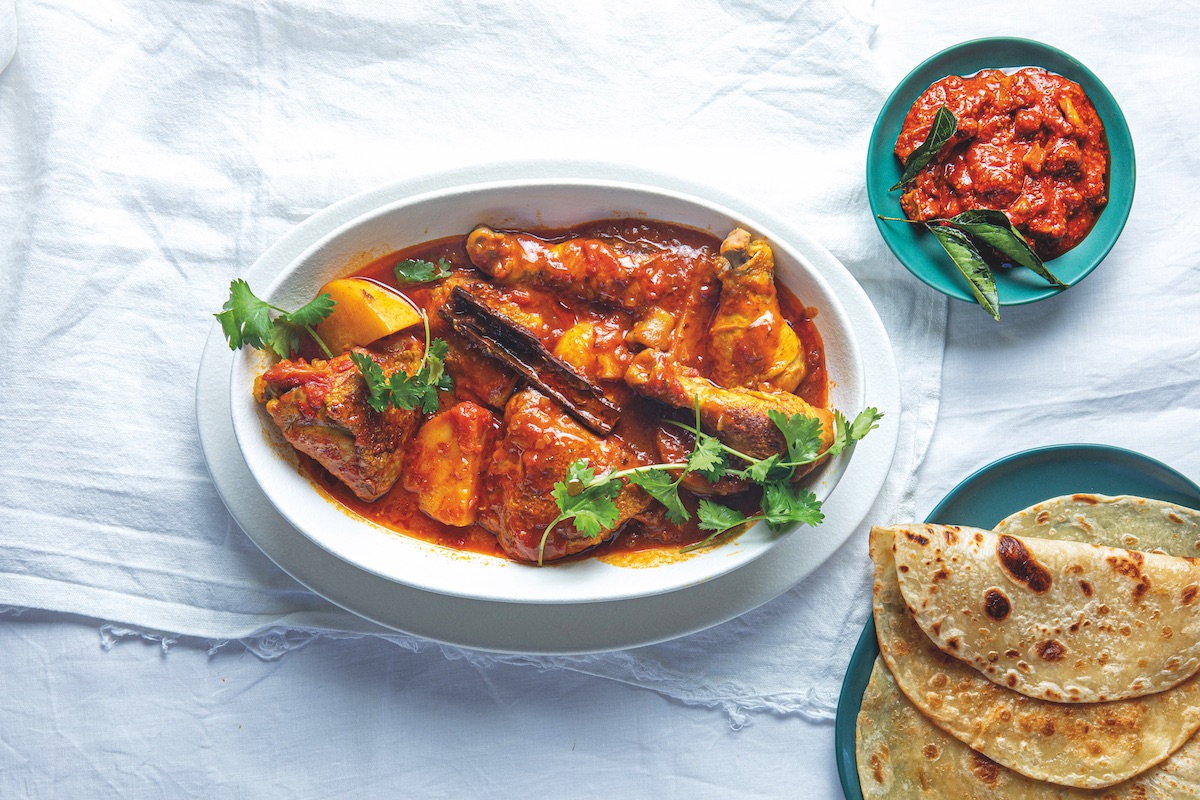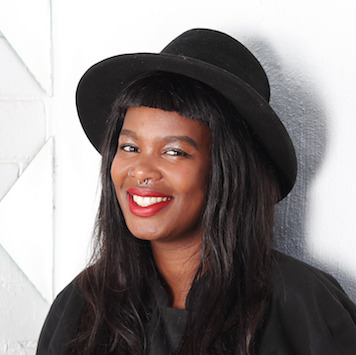Shahista Khan’s top tips for Ramadan and Eid
We chat to the content creator and influencer Shahista Khan about the importance of food and community, charity as a cornerstone of Islamic faith, how she gently helps her kids participate in Ramadan with healthy snacks, and how to take the guesswork out of Eid celebrations.
Shahista Khan (@mykitchenza) is a food content creator who balances between the traditional and the modern, sharing simple, sumptuous meals on online platforms such as Instagram and TikTok, where she often shares the kitchen with her adorable daughter, Aminah, adapting traditional recipes to match her young family’s sometimes particular tastes. Think rose falooda sans the usual vermicelli, jelly and almonds, and a mango chia seed dessert that Shahista’s son requests for Suhoor. Shahista’s energy and deliciously approachable style of cooking has earned her a healthy online following, reaching well over 100 000 people across her platforms. Her feed teems with vibrant, gratifying colour, texture and taste; always with a respectful nod to South African food culture.
View this post on Instagram
“Eid is the most auspicious time of year. We read more Quran around this time, because this is also the month the Quran was revealed. For the kids, it’s something very exciting, they look forward to Eid morning, and you know how Christians would give their kids Christmas gifts? We give Eidi, usually in the form of money. It’s not compulsory, but with the kids they feel like they’ve done this [fast] for the whole month and they’re excited and waiting for everyone to give them their money,” she laughs. “A lot of people say this is the big Eid, because after a whole lot of fasting, devotions and sacrifice, everybody is really excited for that huge celebration afterwards.”
Who do you celebrate Eid with?
I celebrate Eid with my family, it’s a whole big shebang – my husband Hussein, my kids Eesa, Yusuf and Amina, my parents, my in-laws, my extended family… My home is the home that hosts Eid, so there are always neighbours and friends around. At that first lunch or supper, my house is full. I spend it with a lot of loved ones. Also, whoever is around usually just pops in, so I never really know how many people I’m catering for, but it’s amazing, this atmosphere of joy, happiness and laughter.
Who does the cooking in your family?
I do most of the cooking and I ask visitors who would like to bring a dessert, but I never, ever tell anyone to bring anything. If people pop in with something, that’s great, but I feel, as a host, I want to make sure that everybody has something prepared by me in my home. But a lot of the time people bring a dessert. So, we end up eating a lot more desserts than we should! We bake a lot of biscuits, and then there are also sweetmeats like burfi and chana magaj on the table. Recently, people have started to get fancier with their desserts, so there are a lot of layered desserts, and tres leches is also a very popular one at the moment. Mesh Om Ali, made with phyllo pastry and sweetened milks, is quite a nice one to bring. Biryani is also definitely up there with those foods that are an important part of the Eid table, in South Africa especially, it’s become traditional for us, complete with all the sides – poppadums, sour milk and a variety of salads.
Check out Shahista’s famous chicken biryani below:
View this post on Instagram
Does your family have any unique Eid traditions?
I don’t know if it’s unique, but the night before Eid, my family gets new sets of pyjamas, so we go to sleep early, and wake up fresh in these new pyjamas. On Eid, we are taught that we need to wear our best, so people generally like to go out and get new clothes. You don’t always have to get new stuff, but you do need to be in your best attire on that day.
What have you and your family been fuelling up on for Suhoor?
My kids really like eggs, so we have quite a bit of them over sehri time. Smoothies are also very popular in my home.
What kinds of gifts are usually exchanged around Eid?
People often get something small but meaningful, like sweets or fancy chocolates. It’s never a big gift, although you’re allowed to be as over the top as you’d like to be depending on your budget and the relationship you have with the people you’re gifting. I also always try to put a small gift on each plate at the table on Eid morning when we’re having breakfast.
What can’t you imagine leaving out of your Eid table?
That would definitely be Eid milk. There is no Eid without it, it is absolutely loaded with nostalgia. From the time I was a little girl I could remember Eid milk being made by my granny when the men were at mosque. I remember my mom making it, and I have continued the tradition. When everybody arrives, the milk is hot. It’s a thick sort of milk, you have to eat in a cup with a spoon, with the vermicelli, toasted nuts, rose water and condensed milk. It’s really nostalgic, I can’t begin to tell you! It brings back a lot of memories over the years of watching my granny’s hands busy in the pots… I could not go without it, it’s really good.

Find the recipe for Eid milk here.
What are some of your greatest Eid hosting hacks?
• Preparation is always key! You need to work on your menu and know exactly what you’re making first.
• Dishes that can be made in advance should be prepped, such as desserts and certain salads.
• Marinate your meat overnight if you’re making biryani – don’t leave any heavy lifting for the day of Eid, make sure that all is taken care of – cutting onions, grating tomatoes, all that needs to be done before.
• Heating up food is quick and not the hardest part of the preparation. Work efficiently. You also want to make sure your guests don’t have to sit and wait to eat.
• Have an idea of your tablescape and what colours you’ll be using, get your flowers beforehand – don’t leave it till the last minute.
Although Eid is a wonderful time to spend with family, friends and those you love, it’s also a very important day to remember those who are less fortunate and have less to work with, or the vulnerable in society. We are called on to give charity on Eid morning, it’s called Fitra, and it has to happen before all Eid proceedings. So, even when we are celebrating, it’s vital to remember how fortunate we are.
Follow @mykitchenza for more Eid inspiration and tasty recipes.
About Ramadan and Eid

Find the recipe for Eid chicken curry here.
Following a sacred month of fasting and charitable works, Ramadan comes to a close as the festival of Eid approaches. Muslims around the world are preparing to break their fast and celebrate Eid ul-Fitr, which is the first part of Eid celebrations, lasting from one to three days depending on certain beliefs. On this day, Muslims celebrate after the sacrifices made and praise Allah for giving them the strong will required to see through the trying Ramadan fast, and spend the day in fellowship with fellow Muslims, performing Salah, visiting family and friends, and importantly, sitting down to an elaborate meal.
People often confuse Eid ul-Fitr with Eid ul-Adha, or Qurbani, a holy period for Muslims that is observed during the twelfth month of the lunar year, after Hajj or the pilgrimage to Mecca, which every adult Muslim has to make at least once in their lifetime. This is also a time of great celebration and comes two months after Eid ul-Fitr on 16 June. The Islamic calendar is informed by the lunar cycle, so the dates change every year. This year, Eid ul-Fitr is likely to fall on 9 April when the sighting of the new moon will mark the beginning of the new month, and the end of Ramadan.



Comments